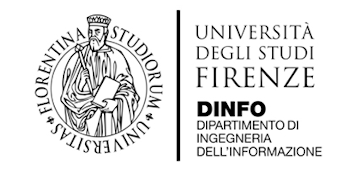Measuring ancient mortars and concretes to discover the past
ORGANIZED BY

Marco Lezzerini
University of Pisa, Italy

Andrea Aquino
University of Pisa, Italy
ABSTRACT
The use of mortars and concretes is dated far back in time. Ancient Romans widely used concrete and mortars, and there are some evidence of binders use even in the ancient Egypt. The development of slightly different types of mortars and concretes worldwide can tell us many information about the development status of a certain civilization and the kind of building technologies they were able to use.
ABOUT THE ORGANIZERS
Marco Lezzerini (PhD) is Associate Professor of Mineralogy and Petrology for Cultural Heritage and Environment at the Department of Earth Sciences of the University of Pisa and Research Affiliate to the Applied and Laser Spectroscopy Laboratory Institute of Chemistry of Organometallic Compounds Research Area of CNR Pisa (ICCOM-CNR). He was born in Bergamo (BG) on May 7th, 1963. He took a MSc degree magna cum laude in Geological Sciences at the University of Pisa (1991) and a PhD in Earth Sciences (1992-1996) at the University of Pisa. Since 2005, he is Head of the Applied Mineralogy Laboratory at the Department of Earth Sciences of the University of Pisa and, since 2014, he is Scientific Responsible of the X-Ray Fluorescence Laboratory at Department of Earth Sciences of the University of Pisa. Since 2014, he is Vice-President of the Degree Course Council in Natural and Environmental Sciences (Undergraduate cycle), University of Pisa.
He is involved in teaching activity on several courses in the fields of petrographic and mineralogical disciplines and geo-mineralogical studies applied to the conservation and restoration of Cultural Heritage and of Environmental Mineralogy. He is a world-renowned expert in Applied Mineralogy and Petrology for Cultural Heritage and Environment with an interdisciplinary experience and background in natural sciences, chemical, mineralogical and petrographic material characterisation, instrumentation and new technologies. He was referee for several national and international journals dealing with applied mineralogy and petrology, geochemistry, construction materials, conservation science, archaeology and cultural heritages. He has experience in optical microscopy (OM), X-ray fluorescence analysis (XRF), X-ray diffraction analysis (XRD), thermogravimetric analysis (TG-DSC), scanning electron microscopy (SEM-EDS), measurement of physical, mechanical, hydric and thermal properties of building materials, and on mineralogy and petrology of very low grade metamorphic rocks. He is involved in a series of projects in many fields of Material Sciences, Geomaterials in Cultural Heritage, Stone conservation and Archaeometry. He has participated in several national and international projects and managed many research contracts with small, medium and large enterprises. He has been partner of national projects funded by the Italian Ministry of Culture and Education and he participated in the EU Project Horizon 2020: Nanomaterials for conservation of European architectural heritage developed by research on characteristic lithotypes - NANO-CATHEDRAL within the Call: NMP 21–2014: Materials-based solutions for the protection or preservation of European cultural heritage. He is highly proficient in computing and Internet, skilled in latest technologies. He is author and co-author of 80 Peer-reviewed publications, 110 Abstracts and proceedings.
Andrea Aquino, graduated in Earth Sciences and Technologies, curriculum Volcanology, Geothermal Energy and Georesources, at the University of Florence. PhD student of 34th cycle of Doctoral School in Earth Sciences at University of Pisa with a regional grant on the subject: Decay of natural and artificial stones used in historical buildings: influence of mineralogy and microstructure and new restoration methods. On 2018, he held a grant at University of Siena - Department of History and cultural heritage, in Archaeometry: Study and analyses of slags coming from Vetricella Area, Siena, Italy. Search for origins of metals. Petrography, XRD, SEM, EMPA. He is a member of SGI - Società Geologica Italiana, AIAr - Associazione italiana di Archeometria, EGU - European Geoscience Union.














